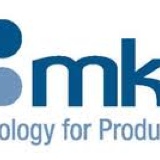Title Page
-
Site conducted
-
Section
-
Date:
-
Audit Team #
-
Auditors:
6 PLANNING
6.1 Actions to address risks & opportunities
6.1.1 General
-
1. What process has been developed to identify risks and opportunities?
-
Objective Evidence/Notes
-
2. Does the organization maintain documented information on its risks and opportunities, and are the processes needed documented to the extent necessary to be sure they are carried out as planned?
-
Objective Evidence/Notes
-
3. Has the organization determined the risks and opportunities that need to be addressed to give assurance that the EMS can achieve its intended outcome(s)?
-
Objective Evidence/Notes
-
4. Has the organization determined the risks and opportunities that need to be addressed to prevent, or reduce, undesired effects including the potential for external environmental conditions to affect the organization?
-
Objective Evidence/Notes
-
5. Has the organization determined the risks and opportunities that need to be addressed to achieve continual improvement?
-
Objective Evidence/Notes
6.1.2 Environmental aspects
-
1. Have environmental aspects of activities, products, and services been determined?
-
Objective Evidence/Notes
-
2. Does the organization’s determination of environmental aspects consider a life cycle perspective?
-
Objective Evidence/Notes
-
3. Do the identified aspects take into account change? i.e. <br>• Planned or new developments and<br>• New or modified activities, products and services
-
Objective Evidence/Notes
-
4. Do the identified aspects cover abnormal and potential [foreseeable] emergency situations as well as normal situations?
-
Objective Evidence/Notes
-
5. How is an aspect determined to be significant (those aspects that have or can have a significant impact on the environment)? Is there any established criteria?
-
Objective Evidence/Notes
-
6. Are significant aspects communicated to the various levels and functions within the organization?
-
Objective Evidence/Notes
-
7. Does the organization maintain documented information of its criteria used to determine its significant environmental aspects?
-
Objective Evidence/Notes
-
8. Does the organization maintain documented information of its environmental aspects and associated environmental impacts?
-
Objective Evidence/Notes
-
9. Does the organization maintain documented information of its significant environmental aspects?
-
Objective Evidence/Notes
6.1.3 Compliance obligations
-
1. Is there an appropriate plan to address the significant aspects, compliance obligations, risk & opportunities?
-
Objective Evidence/Notes
-
2. Does the organization determine how its compliance obligations apply to the organization?
-
Objective Evidence/Notes
-
3. Does the organization take its compliance obligations into account when establishing, implementing, maintaining and continually improving its environmental management system?
-
Objective Evidence/Notes
-
4. Does the organization maintain documented information of its compliance obligations?
-
Objective Evidence/Notes
6.1.4 Planning actions
-
1. Has the organization planned actions to address significant aspects, compliance obligations, risks & opportunities?
-
Objective Evidence/Notes
-
2. Has the organization planned actions to integrate and implement the actions into its EMS processes or other business processes?
-
Objective Evidence/Notes
-
3. Has the organization planned actions to evaluate the effectiveness of these actions?
-
Objective Evidence/Notes
-
4. Does the organization maintain documented information of its compliance obligations?
-
Objective Evidence/Notes
6.2 Environmental objectives and planning to achieve them
6.2.1 Environmental objectives
-
1. Have environmental objectives been established taking into account the significant aspects, compliance obligations and considering its risks?
-
Objective Evidence/Notes
-
2. Are these objectives consistent with its environmental policy?
-
Objective Evidence/Notes
-
3. Are these objectives measurable (if practicable)?
-
Objective Evidence/Notes
-
4. Does the organization monitor the environmental objectives?
-
Objective Evidence/Notes
-
5. Are these objectives communicated?
-
Objective Evidence/Notes
-
6. Does the organization update the environmental objectives as appropriate?
-
Objective Evidence/Notes
-
7. Does the organization retain documented information on the environmental objectives?
-
Objective Evidence/Notes
6.2.2 Planning actions to achieve environmental objectives
-
1. What will be done in regards to the environmental objectives?
-
Objective Evidence/Notes
-
2. What are the required resources for those activities?
-
Objective Evidence/Notes
-
3. Are the responsibilities assigned to persons involved?
-
Objective Evidence/Notes
-
4. Are there time frames established for these activities to be completed?
-
Objective Evidence/Notes
-
5. Identify how progress toward the objectives and targets are tracked and communicated to upper management. Ensure that monthly operating reports (or similar method) include status of objectives and targets.
-
Objective Evidence/Notes
-
Is this audit complete?









